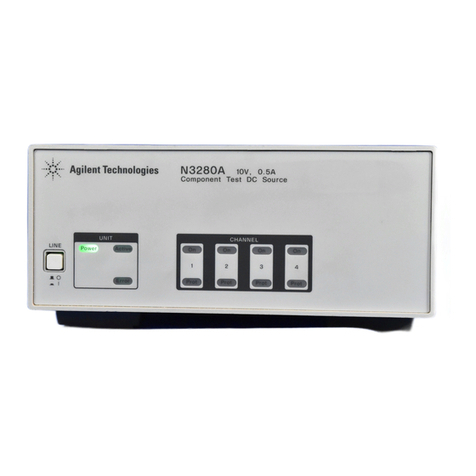May 2020, Rev 4
Page 1of 6
Fire Hydrant/Hosereel Portable Tester .
INSTRUCTION MANUAL
INTRODUCTION
The AMBIT P.F. Series of portable testing units have been primarily designed to meet the need for accurate
pressure and flow measurement at the service point of fire hydrants and/or hose reels. Custom built variations
of these basic units can be supplied to satisfy many other similar applications in a variety of industries where
pressure/flow relationships need to be established.
THE EQUIPMENT
Consists of a portable Aluminium cabinet into which is fitted a flow indicator, a pressure gauge and a flow
tube/s.
Both instruments are fitted into a detachable front ‘loading’ panel which enables easy access for service or
maintenance work.
The flow instrument incorporates high performance microprocessor electronics with the convenience of full-
time battery operation and will withstand the day to day rugged handling normally required of a portable
instrument. The standard flow ranges are :-
¾” Tube : 0/180 LPM (or optional LPS)
2 ½” Tube : 0/1800 LPM (or optional LPS)
The accuracy for the flow instruments are :-
¾” Tube : +2% F.S.D. up to 120 LPM & +3% from 120 to 180 LPM (or optional LPS)
2 ½” Tube : +2% F.S.D. up to 1200 LPM & +3% from 1200 to 1800 LPM (or optional LPS)
The pressure gauge is of a heavy duty construction and has an accuracy of +1% of full range. The standard
pressure range is 0/1000 kPa with optional 0/1600 kPa. As an option the unit can be fitted with an “overrange
protection valve” which will protect it from damage due to pressure surges.
All screws are stainless steel and wetted parts are either stainless steel or polypropylene.
The unit is guaranteed for a period of 12 calender months from the date of supply, with the exception of the
paddlewheel flow sensor, which is susceptible to damage from debris in the line.
CONDUCTING A TYPICAL TEST
1. CAUTION
Prior to connecting the test box to any Hydrant/Hosereel outlet it is most important that the service
outlet valve be fully opened for not less than 2 minutes. This should flush the pipeline clear of any
foreign particles that could possibly damage the flow sensor (See TROUBLESHOOTING –page 4).
Please ensure the Hydrant/Hosereel Tester is securely held down, prior to
allowing flow through the unit.
Where ever possible, it is highly recommended a diffuser be fitted tothe outlet.
When opening the valve (if fitted), please ensure valve is opened SLOWLY
2. IMPORTANT
To obtain specified accuracy of the Flow indicator:-
(a) DO NOT Fit valves other than ‘full bore’ ball valves to either the inlet or outlet connections of
the tester.
(b) DO NOT Introduce any partial obstruction or bend within 250mm of either connection.























